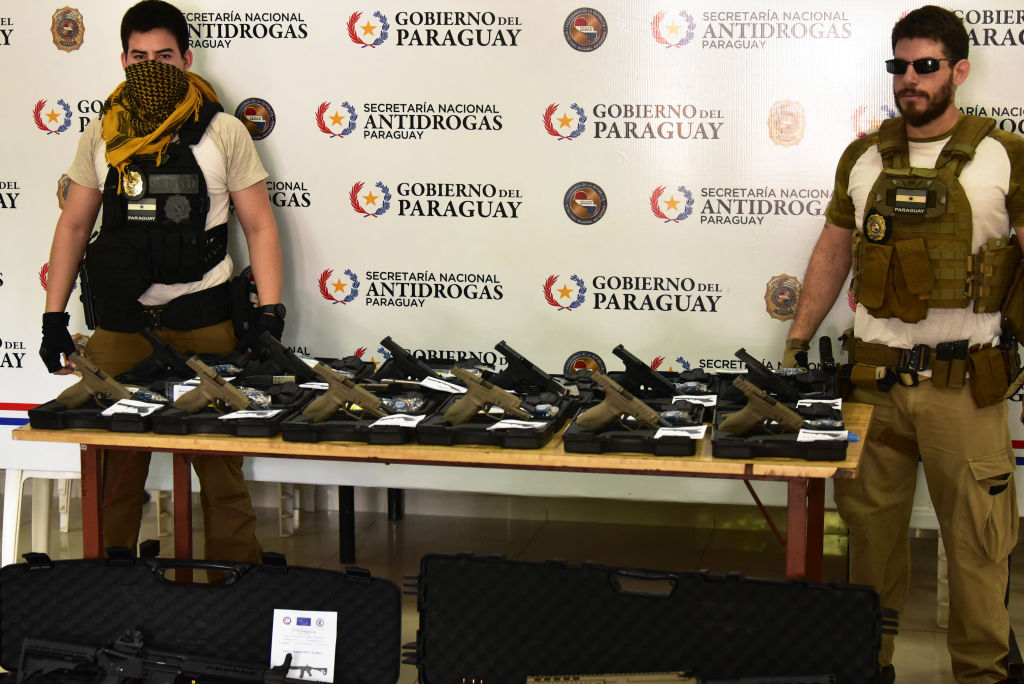Colombia Takes out Top FARC Leader Alfonso Cano
Colombia Takes out Top FARC Leader Alfonso Cano
The Colombian military delivered a harsh blow to the FARC with the November 4 assassination of the guerrilla group's leader, Alfonso Cano. What does Cano's death mean for the future of the FARC?
The Colombian military took out a series of top guerrilla leaders in the past few years, but yesterday’s assassination of Alfonso Cano marked the first time the government either caught or killed the top leader of the Revolutionary Armed Forces of Colombia (FARC). Born Guillermo León Sáenz but known most commonly by his FARC battle name, Cano died in a bombing raid carried out in the Cauca province, according to official reports. Rumors of his death began to swirl in the afternoon of November 4, but it wasn’t until the early hours of the following morning—after official reports that Cano’s identity was confirmed through fingerprints—that President Juan Manuel Santos delivered remarks announcing the death. “I want to send a message to each and every member of this organization: demobilize,” said Santos in the televised address. “Because if you don't, as we've said so many times and as we've shown, you will end up in jail or in a tomb.” Still, the president warned against celebrating victory until peace breaks through the struggle against the guerrillas that’s now over four decades old. The FARC has seen its numbers dwindle, and much of its leadership crushed. So how much closer does Cano’s death bring the conflict to a close?
The demise of Cano, an anthropologist and ideologue whose FARC career dates back to the 1980s, is the latest in a string of blows suffered by the guerrillas. Last year, within two months of Santos’ inauguration, the president announced the assassination of FARC's second-in-command Jorge Briceño Suárez, better known as “Mono Jojoy.” During that strike (as in the one against Cano) Colombian authorities reportedly seized a number of computers and USB drives providing intelligence insight into FARC operations. In 2008, Colombia’s cross-border raid into Ecuador sparked tensions with that neighbor and Venezuela, but also brought about the assassination of another senior leader, Raul Reyes, as well as the capture of computer hardware. Plagued by desertions, the FARC has seen its numbers drop from roughly 18,000 soldiers almost a decade ago to an estimated 8,000 in recent years, according to official figures.
After news broke of the 2008 death by natural causes of FARC founder and leader Manuel “Tirofijo” Marulanda, Santos—then defense minister in the administration of Álvaro Uribe—declared: “The end of the FARC is in sight.” Cano took over leadership at that point and, until Friday, evaded capture while leading the group to conduct a series of ambushes against Colombian soldiers. On the heels of Cano’s assassination, Semana offers a multimedia look at the FARC’s fractured leadership, outlining the senior commanders caught, captured, or killed and profiling those who remain.
Still, as an in-depth analysis by Colombia’s La Silla Vacía says, Cano’s death doesn’t spell “game over” for the FARC just yet. The leader’s death delivers a crucial blow, results in another shakeup in the guerrillas' fragmented leadership, could spark large-scale demobilizations, and will force the group to rethink its military strategy. But, as the article says, the FARC operates under the mandate of a secretariat rather than one leader: “[T]he death of a commander is always under consideration within the FARC and the Secretariat will restructure accordingly, as it has over the past 40 years.” The Economist points out that as recently as August, Cano said in a video message that “dialogue is on the way.” Whoever replaces him at the helm could determine whether that rings true; “If he is replaced by a fighter from the group’s ideological wing, such as Luciano Marín Arango (alias Iván Márquez) or Rodrigo Londoño-Echeverry (alias Timochenko), the FARC would probably remain willing to talk. But if Milton de Jesús Toncel Redondo (alias Joaquín Gómez), the commander of the guerrrillas’ powerful and cash-rich Southern Bloc, takes over, they could well resume attacks on the government with renewed vigor.”
Learn more:
- Read AS/COA news analyses about a weakening FARC and the 2010 death of "Mono Jojoy."
- Watch the video of President Juan Manuel Santos announcing Alfonso Cano's death.
- Visit Semana's interactive look at the FARC's leadership, including profiles of commanders caught or captured.








